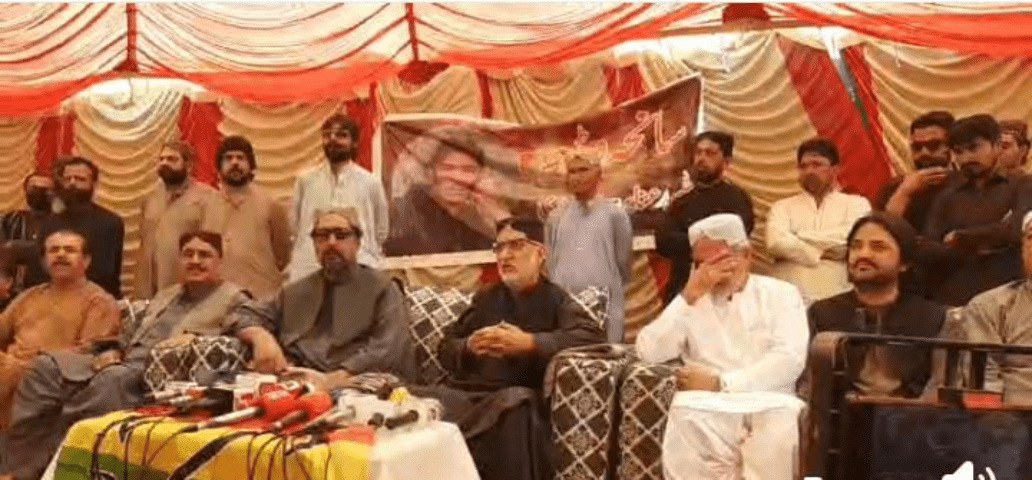By Sameer Hoth
After 20 days of protest over arrests of Baloch activists, BNP chief eyes a new strategy, but can shifting from sit-ins to street rallies make an impact, especially as BYC has already taken to the streets?
After twenty days of protest in the arid hills of Lakpass, just outside Quetta, the president of the ethno-nationalist Balochistan National Party (Mengal), Sardar Akhtar Mengal, has called off his party’s sit-in demonstration against the arrest of Baloch rights activists. In its place, he announced a new strategy: a public outreach movement. What a public outreach movement would entail remains to be seen and is best explained by BNP leader Akhtar Mengal himself. However, since the arrest of its leadership, the Baloch Yekjehti Committee (BYC) has consistently carried out a similar strategy through rallies and demonstrations across the province. It raises the question: what has this approach achieved so far, and what might Mengal hope to achieve by adopting a similar path?
As a tribal chieftain and seasoned politician, Mengal may envision mobilising his support base in a series of rallies or engagements across Balochistan. Yet, in the vacuum of details, observers will inevitably draw comparisons to the Baloch Yekjehti Committee (BYC), which has, over the past several months, mounted a defiant and consistent grassroots campaign across the province despite increasing state repression.
Since the arrest of BYC’s leadership, the group has intensified its efforts, launching demonstrations and protest rallies in various towns and cities. So far, however, these efforts have yielded little in terms of tangible outcomes. The state has responded not with dialogue but with escalated crackdowns detaining not only BYC leaders but, in some instances, also their relatives. Just this week, Dr. Mahrang Baloch’s sister revealed that one of their cousins had also been disappeared, further fuelling concerns of collective punishment.
In this context, Mengal’s 20-day sit-in conducted in the face of threats, a police crackdown, and even a suicide bombing attempt deserves commendation. But the choice of strategy raises questions. What did the BNP-M leader hope to achieve through something which BYC has been doing since its top leadership arrest? And more importantly what, in the end, was actually achieved?
Dr. Mahrang Baloch’s high-profile month-long sit-in outside Islamabad’s National Press Club earlier this year should have offered lessons. Her protest catapulted the issue of enforced disappearances and human rights violations in Balochistan into international headlines. While it couldn’t change state’s behaviour but it initiated a global conversation around Baloch grievances.
By contrast, Mengal’s sit-in concluded with no concrete gains. Despite visits by government representatives during the protest, negotiations failed. Unlike Mahrang, Mengal opted not to compromise, and in the absence of dialogue or sustained pressure, the government simply outlasted him.
Timing, too, raises eyebrows. The decision to end the protest came just one day after the Balochistan High Court handed down a controversial decision deferring Mahrang Baloch’s petition to the provincial home department, a move criticised by activists as a legal sidestep. If ever there was a moment for Mengal to show political outrage and rally momentum, it was then.
Instead, he is now returning to his hometown of Wadh, with plans to resume public engagement no earlier than April 20, when he is expected to hold a rally in remote tiny town of Mastung. Whether he can remobilise public sentiment after the anti-climactic end to his sit-in remains uncertain.
To be clear, a rally in Mastung may bolster party morale, consolidate political support, and raise awareness, all valid objectives for a regional party. But it is unlikely to exert meaningful pressure on Islamabad and Quetta to release BYC leaders or engage in dialogue over Balochistan’s festering rights crisis.
This speaks to a broader strategic issue among Baloch political parties. Rallies and protests in small villages such as Wadh, Buleda, or Surab serve a vital purpose in local political mobilisation. But they do little to rattle the centre of power. The government responds to pressure when its interests, especially economic ones are affected or hurt.
Protests that choke economic arteries or industrial zones, such as Hub Chowki, Gwadar or that paralyse strategic nodes like Quetta, are more likely to be noticed. Rallies in Mastung, Kalat, Surab or any other town won’t affect the government. Rather it affects the local economy more.
Mengal has yet to unveil the full contours of his so-called public outreach strategy. For now, it is too early to assess its potential impact. But a critical question lingers: what if the BNP-M and BYC representing two distinct currents in Baloch politics found common ground? If Mengal, with his tribal stature and political machinery, were to align with BYC’s street power and digital activism, it could usher in a more coordinated and potentially more effective Baloch resistance movement.
But that would require compromise, collaboration, and a clear-eyed understanding that symbolism alone is not enough. In a province where voices continue to disappear and dissent is criminalised, better strategy not just resilience is everything.
(The author is a graduate in Violence, Conflict and Development from SOAS University of London, with a research focus on Iran and its ethnic tensions, particularly concerning the Baloch community across the goldsmith line. He hails from Sistan-Baluchestan.)
